Hurrah for the Pumpkin Pie!
by Merchant's House Museum
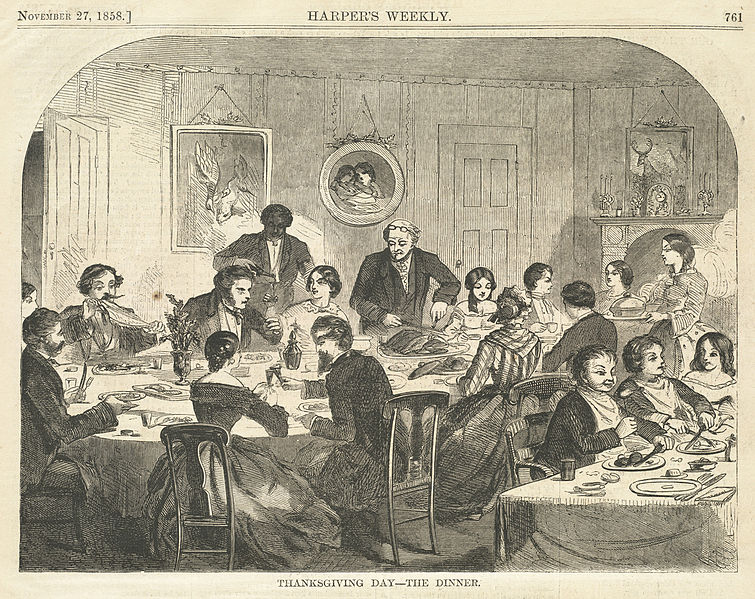
“Thanksgiving Day – The Dinner,” by Winslow Homer, Harper’s Weekly, November 27, 1858
In 1844, writer and reformer Lydia Maria Child wrote the classic Thanksgiving poem, A Boy’s Thanksgiving Day. The poem, later put to music and also revised as a Christmas song, celebrated her childhood memories of visiting her grandparents’ house in Massachusetts.
Over the river, and through the wood,
to Grandfather’s house we go;
the horse knows the way to carry the sleigh
through the white and drifted snow.
Over the river, and through the wood,
to Grandfather’s house away!
We would not stop for doll or top,
for ’tis Thanksgiving Day.
Over the river, and through the wood-
oh, how the wind does blow!
It stings the toes and bites the nose,
as over the ground we go.
Over the river, and through the wood
and straight through the barnyard gate.
We seem to go extremely slow-
it is so hard to wait!
Over the river, and through the wood-
when Grandmother sees us come,
She will say, “O, dear, the children are here,
bring a pie for every one.”
Over the river, and through the wood-
now Grandmothers cap I spy!
Hurrah for the fun! Is the pudding done?
Hurrah for the pumpkin pie!
At the time, Child was best known as the author of America’s first cookbook, The Frugal Housewife, which went through 35 printings between 1829 and 1850. Think Joy of Cooking, 19th century-style.
Here’s her recipe for Pumpkin Pie:
“For common family pumpkin pies, three eggs do very well to a quart of milk. Stew your pumpkin, and strain it through a sieve, or colander. Take out the seeds, and pare the pumpkin, or squash, before you stew it; but do not scrape the inside; the part nearest the seed is the sweetest part of the squash. Stir in the stewed pumpkin, till it is as thick as you can stir it round rapidly and easily. If you want to make your pie richer, make it thinner, and add another egg. One egg to a quart of milk makes very decent pies. Sweeten it to your taste, with molasses or sugar; some pumpkins require more sweetening than others. Two tea-spoonfuls of salt; two great spoonfuls of sifted cinnamon; one great spoonful of ginger. Ginger will answer very well alone for spice, if you use enough of it. The outside of a lemon grated in is nice. The more eggs, the better the pie; some put an egg to a gill of milk. They should bake from forty to fifty minutes, and even ten minutes longer, if very deep.”
“Fastidiously preserved” and “also imperiled” Merchant’s House in The NY Times
by Merchant's House Museum
Did you see the “fastidiously preserved” and “also imperiled” Merchant’s House in The New York Times last weekend?
Two Goods Reasons to Visit NoHo
From the 1830s to the 1850s, East Fourth Street was a high-society Manhattan address with neighbors named Astor and Vanderbilt. Charles Dickens and Washington Irving sojourned in the area, which then was called Bond Street. The MERCHANT’S HOUSE, at No. 29, built in 1832, stands as a testament to that period, seeming as unchanged and as fragile as Miss Havisham’s wedding dress. It is also imperiled.
Click here to read the full article.
Back to School with the Tredwells
by Merchant's House Museum
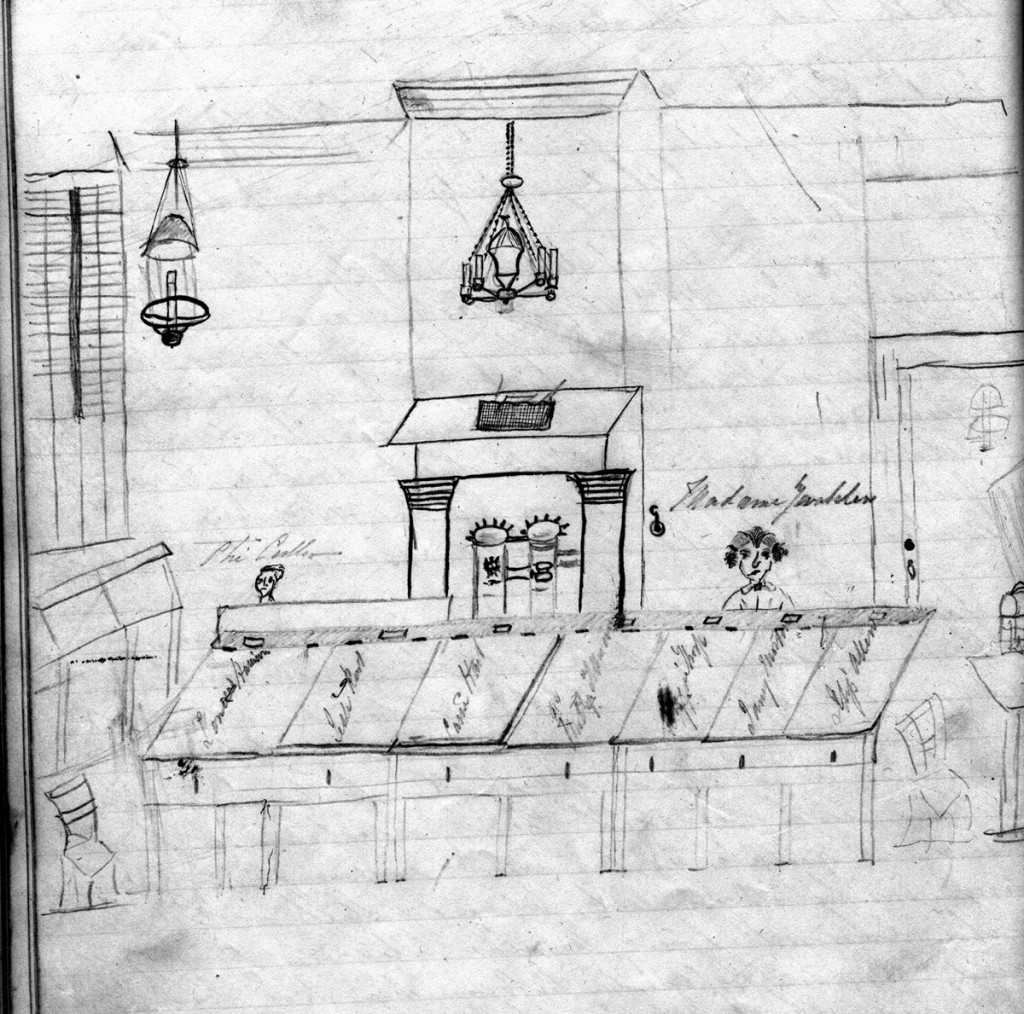
Classroom at Mrs. Okill’s Academy, drawn by a boarding student in 1850, when the Tredwell sisters were students.
The five older Tredwell girls were students at Mrs. Okill’s Academy, one of the most elite private female academies of the time. Located at 8-10 Clinton Street (now 8th Street), Mrs. Okill’s offered a “fashionable education” to young ladies. The school was housed in two connecting buildings each with a floor plan similar to that of the Merchant’s House. Here boarding students from as far away as Ohio and Louisiana joined day students like the Tredwells in the study of academic subjects, including the French language, as well musical training, considered an essential accomplishment of refined young ladies.
Our current special exhibition, Lessons Learned: The Tredwell Daughters’ Schoolbooks, is on display through Monday, September 29, and features rarely exhibited schoolbooks from the Museum’s collection, some bearing the comments and signature of Mrs. Okill herself.
Lookin’ Good, Mr. President
by Merchant's House Museum
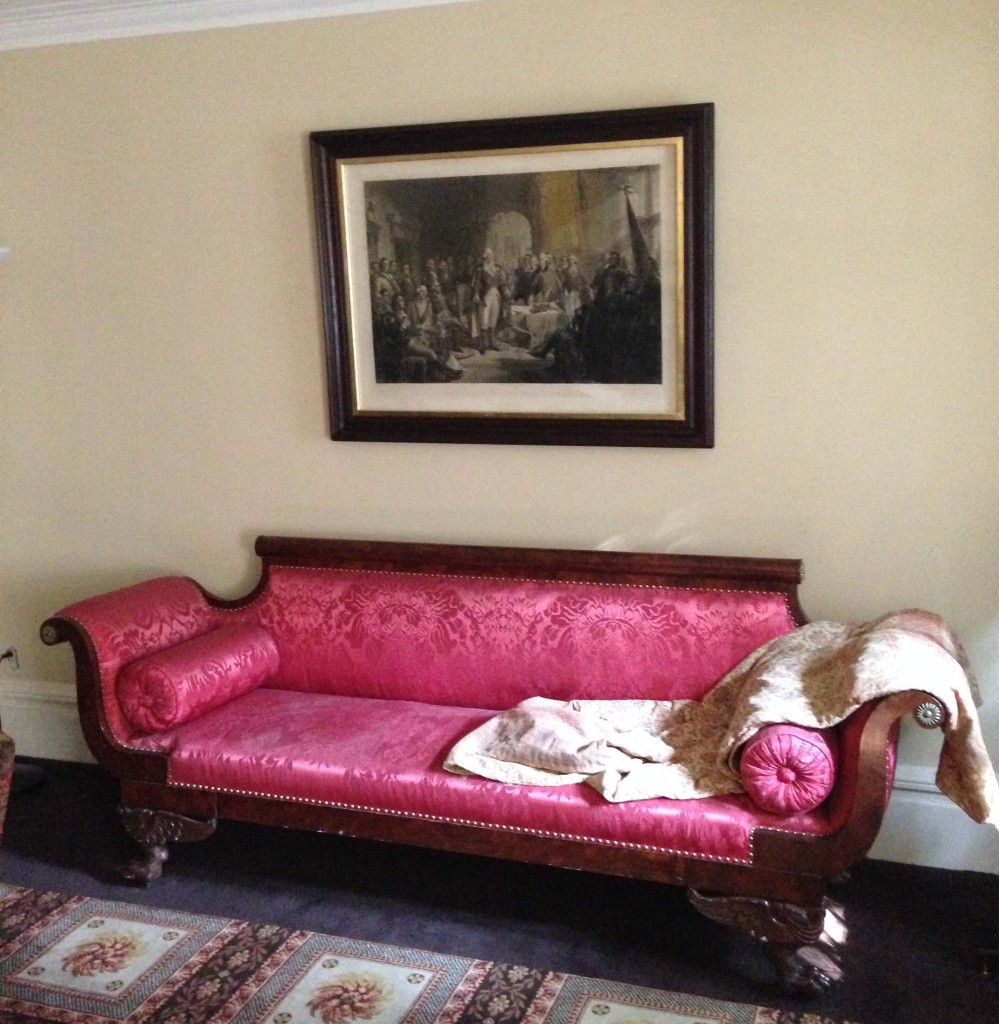
The Tredwells’ 1856 engraving, Washington and His Generals, once again on display in the ground floor Family Room
The 1856 Alexander Hay Ritchie engraving, Washington and His Generals, and its walnut and gilded frame returned to the Merchant’s House last week after six months of conservation. Paper Conservator Caroline Rieger cleaned the engraving, removed the acidic wood strainer, and mended old tears. Conservator Joseph Chiarello cleaned the frame, stabilized the corner joints, and restored the interior gilding. The engraving and frame looks (almost) as good as the day they were made and sold nearby on Broadway.
Washington’s image in 19th-century American homes was ubiquitous and the cultural ideals it represented make it essential to the story of a merchant family such as the Tredwells. Washington was ever on the mind of the Nation’s citizens with the celebration of his 100th birthday in 1832, construction on the Washington Monument in 1848, and efforts to restore his Viriginia home, Mount Vernon, in the 1850s. Many prints depicted Washington as a heroic leader, or as a domesticated family man, serving to make him inspirational to the average American. Seabury Tredwell was eight years old when Washington took the oath of office in New York City.
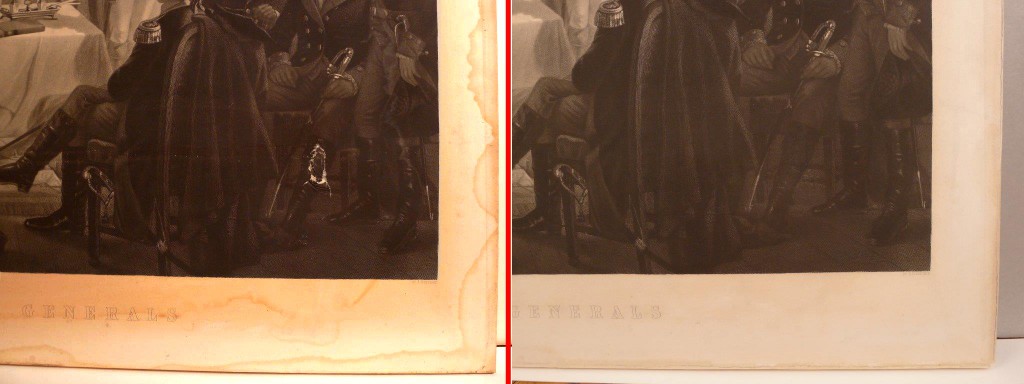
Detail of lower corner, before (left) and after conservation.
The conservation of the engraving and frame was made possible by The Conservation Treatment Grant Program of Greater Hudson Heritage Network with public funds from the New York State Council on the Arts, a state agency.
“Where Did the Tredwells Shop for Food?”
by Merchant's House Museum
Following a recent tour, a visitor asked us where the Tredwells shopped for their food and how they kept it from spoiling, especially during the summer months.
The Tredwells no doubt purchased some of their food at Tompkins Market, a public market located at Third Avenue and Sixth Street, just around the corner. Until the 1860s, it was customary in some families for the man of the house to do the marketing, and so it may have been Seabury Tredwell himself who assumed this responsibility. At the market, one could buy butcher’s meat, poultry and game, produce, fresh fish, and according to a contemporary source, prepared food “cooked ready for parties, breakfasts, dinners or suppers, cold or warm.” (In case anyone thinks ‘take-out’ is new.)
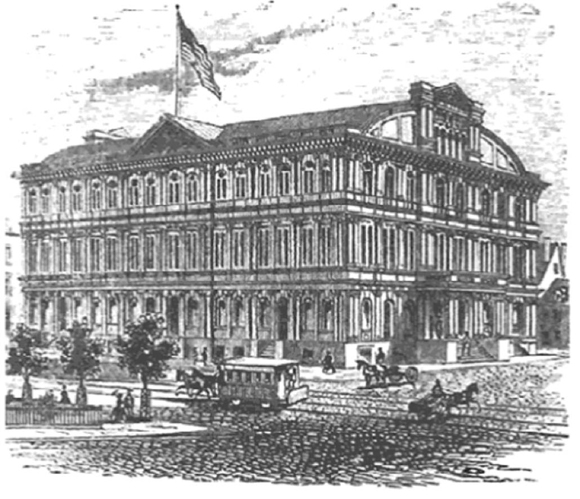 Tompkins Market, 1860 |
 The same site today, |
To store food, ice boxes were available in New York City from about the time the Tredwells moved into the house in 1835. Ice boxes were zinc or tin-lined wooden boxes with a compartment that housed a block of ice. Ice was cut from the Hudson River, stored in ice houses along the river, and delivered to the city by wagon. However, it was scarce — and expensive. By the 1850s, ice cutting had become very efficient, and ice was widely available. The Tredwells surely had an ice box, which was kept in the extension outside the kitchen, or in the cellar, as recommended in domestic manuals.
Happy 194th Anniversary, Seabury and Eliza
On June 13, 1820, at the age of 40, hardware merchant Seabury Tredwell married 23-year-old Eliza Parker at St. George’s Episcopal Church on Chapel Street (now Beekman). The couple met when Seabury was a lodger in a boarding house run by Eliza’s mother. They lived on Dey Street until 1835, when they moved their family of seven children “uptown” to the exclusive Bond Street area. The house on East Fourth Street cost $18,000 and boasted “every modern convenience.” Seabury and Eliza were married for 45 years, until Seabury’s death in 1865. Eliza died in 1882.
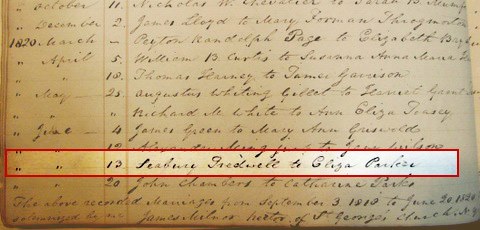 Wedding Registry, St. George’s Episcopal Church |
On display, through August 4: Eliza Tredwell’s 1820 Empire-style embroidered cotton wedding dress. In the last quarter of the 18th century, fashionable ladies adopted a simpler, lighter, and looser columnar style inspired by classical statues — often in fine, nearly transparent white cotton muslin that imitated marble. The style reflected the neoclassical movement that swept the Western world, beginning in the 18th century and continuing into the 19th century.
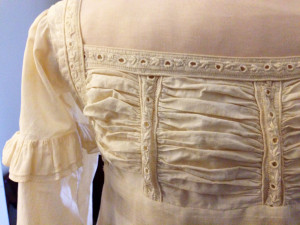 |
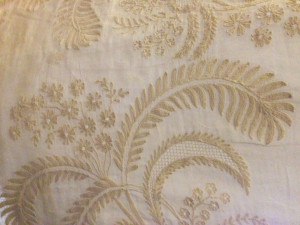 |
The hem of this dress (above right) was most likely embroidered by a skilled artisan in India. The embroidered muslin would then be shipped to the west, sold in bolts, and joined to a hand-made cotton bodice (above left) by a dressmaker.
Real Estate Development on East 4th Street, ca. 1831
by Merchant's House Museum
Following the opening of the Erie Canal in 1825, business in the City boomed. It was the Golden Age of Trade. To escape the increasing noise, congestion, and commercialization of the seaport area, wealthy merchants and their families moved northward on the narrow island of Manhattan.
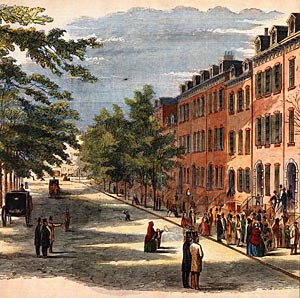
Bond Street, 1857
By the 1830s, “above Bleecker Street” was the place to live. Which is why on June 3, 1831, Joseph Brewster, a hatter and part-time real estate speculator, paid a cool $3,500 for the lot that would become the site of the Merchant’s House. East 4th Street was part of the Bond Street area – an exclusive residential suburb – and prices were on the rise. Brewster had purchased the adjacent lot to the east just two months before for $3,000. By year’s end, eight houses were under construction.
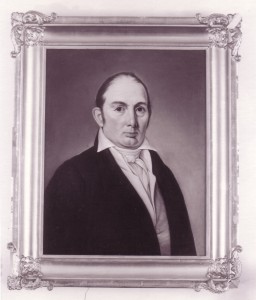
Joseph Brewster
Brewster completed this house and its twin next door in 1832. He lived here for three years and, in November 1835, sold it to Seabury Tredwell for $18,000, making a tidy profit for himself.
You know the rest of the story. A home for 98 years and a museum for 81. And today struggling for its very survival, as it faces demolition, excavation, and construction of an eight story hotel next door. Click here for more information.
The Painters Are Back (Historic Furnishings Plan, Phase II)
Even after 182 years, the interior of the house remains remarkably intact. Extensive paint analysis of each room, an in-depth examination of the layers of alterations made over the years, and research into our Tredwell archives have revealed the family undertook a house-wide redecoration in the 1850s.
Last fall, we completed a major and meticulous restoration and re-interpretation of the ground floor kitchen, family room, and hall, the first phase in implementing the recommendations of our Historic Furnishings Plan.
In preparation for painting the stair hall on four floors, we removed 80 years of long-outdated 20th century technology: phone jacks, fire detectors, intercom systems, doorbells. And wires, wires, wires.

The colors are the same delicious warm ochre as the newly restored ground floor hall.
 Wall Color |
 Trim Color |
Landmarks Preservation Commission Approves Eight-Story Hotel Next Door
After two years, one hearing and three public meetings, on Tuesday, April 8, 2014, the Landmarks Preservation Commission voted 6-1 to approve the eight story hotel next door at 27 East 4th Street. We are now entering into the next phase in our all-out effort to protect the house during the construction.
A “Drab on So Many Levels” Design.
Despite the fact that several Commissioners openly expressed disdain over the design of the building, Chair Robert Tierney and the remaining five Commissioners voted in favor of the proposal. The only Commissioner to vote against the proposal, Margery Perlmutter (thank you!), called it “drab on so many levels.” “I feel like we’ve been exhausted into saying yes to this proposal, so I’m saying no,” she said.
The House – and Its Irreplaceable Ornamental Plaster – Face Grave Danger.
Chair Tierney and his five colleagues also disregarded the strong disapproval voiced by Councilmember Rosie Mendez and other elected officials; six engineering reports warning about the grave risk this development presents to the Merchant’s House; dozens of letters from preservation experts denouncing the inappropriateness of the size of the building; and thousands of citizens who signed our petition and wrote to the LPC.
During the coming weeks, we will be in contact with you about the steps we will be taking to secure the necessary legal and engineering protective measures.
For detailed information about the long and torturous process, the Greenwich Village Society for Historic Preservation is keeping close track.
Our Ghosts
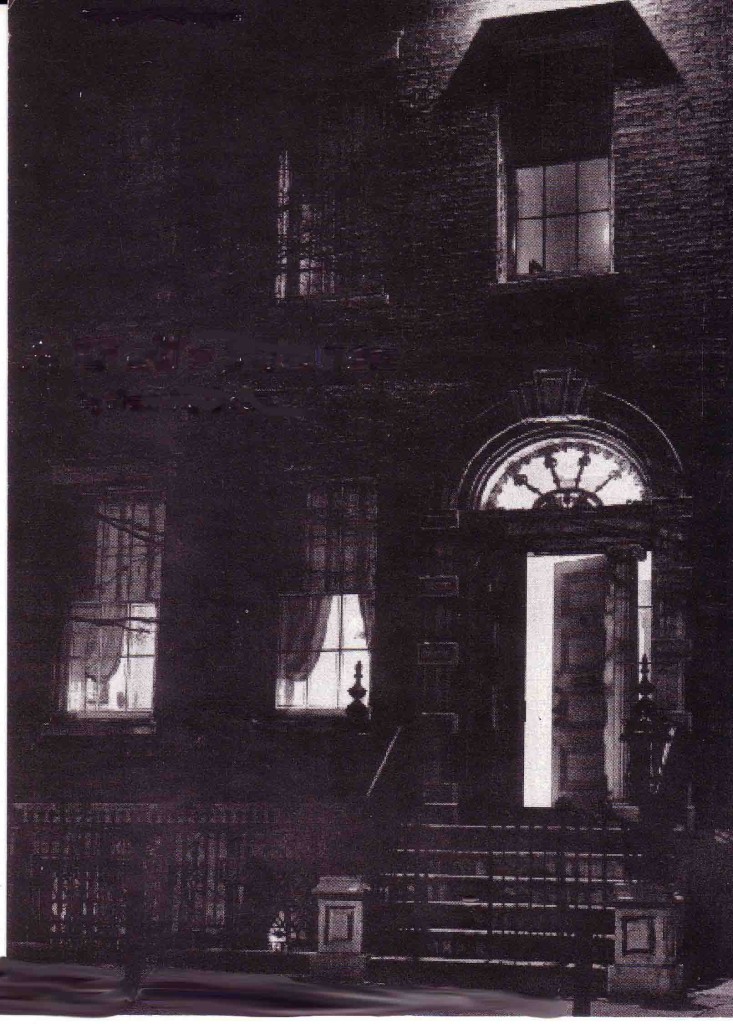
“Manhattan’s Most Haunted House” — The New York Times
Some say the Tredwells, who lived in this house for nearly 100 years, are still here. Gertrude Tredwell, in particular, is thought to be watching over her family home. Born in an upstairs bedroom in 1840, Gertrude never married and lived her entire life here until she died, at the age of 93, in 1933. She was the last member of the Tredwell family to occupy the house before it became a museum, in 1936.
Since the 1930s, tales of strange and unexplainable happenings have surrounded the Merchant’s House. Staff, volunteers, visitors, neighbors, even passersby, have reported seeing, hearing, and smelling things that weren’t there.
Over the years, a number of psychics and paranormal investigators have visited the site, but their findings have always been inconclusive. In 2006, the Museum decided to mount its own investigation with the help of Historic Paranormal Investigations, a NYC-based group. The evidence is mounting that, indeed, something is here.
Whether or not you are a believer, you’ll enjoy reading our recently compiled booklet of ghost stories collected over the years by a member of the Museum’s board. Visit the Museum’s shop to purchase a copy of Some Say They Never Left: Spirited Tales and Ghostly Legends of the Merchant’s House Museum, and decide for yourself. And if you visit the museum and have an “experience,” please let one of the staff know so we can add your story to our growing roster of ghost tales.
« Newer Posts — Older Posts »


